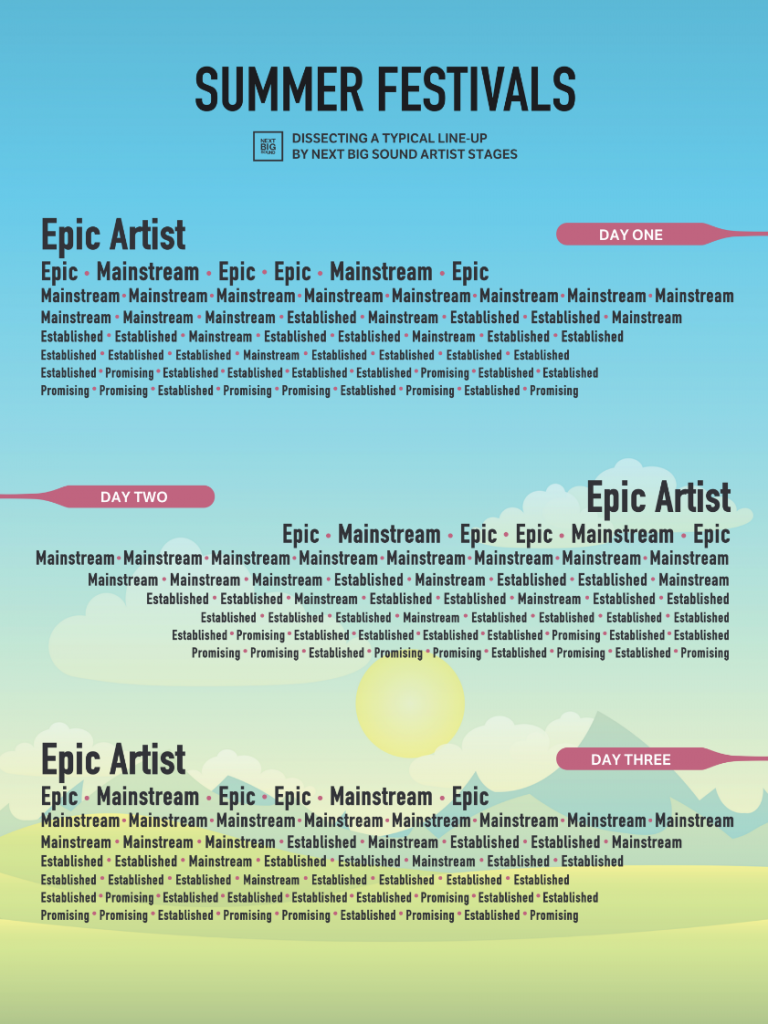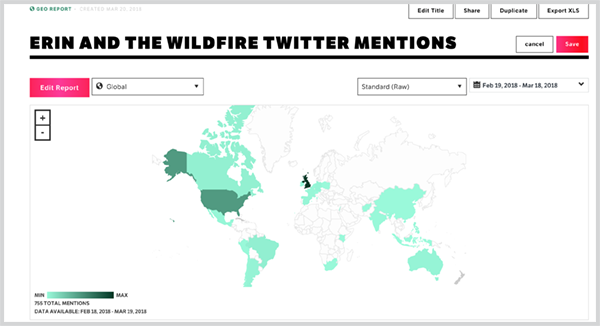In order to successfully grow as an artist, it’s essential to cultivate a solid and authentic relationship with your fans. While the very idea of this can feel overwhelming, Next Big Sound offers a toolset that can make this kind of fan growth an achievable reality.
_________________________________
Guest post by Angela Mastrogiacomo of Soundfly’s Flypaper
One of the keys to a successful career as a musician is to create a culture that continually serves a thriving fanbase. While there are many key components to getting noticed, if your fanbase is happy and feels taken care of, you will get noticed by larger and larger communities and begin to grow.
For many artists, finding their ideal fan and learning to cultivate that relationship in a way that’s authentic can feel a little overwhelming. While there are many ways to do this, some of which we’ve outlined in past articles, today we wanted to explore a tool that has made fan growth a priority for the last decade or so via analytics and industry-wide insights — enter, Next Big Sound.
Powered by data from the online streaming radio platform Pandora, Next Big Sound (NBS) is essentially a giant analytics-based service that gives artists access to everything they need to know to make informed decisions about their next digital move. They also help to bridge the gaps and patch the holes between artists and their fans.
So how does it work, exactly? Signing up and creating an artist page is pretty easy. Once you do that, you’ll start receiving a weekly report with insights into your audience engagement and which artist stage you’re at. These stages are broken down into Undiscovered, Promising, Established, Mainstream, and Epic — a really funky poster in the classic Coachella style is provided to help you understand what that means. Check it out.

Unless you’re backed by a major label, or at least an internationally established indie, you’re likely to be classified as “Promising” or “Undiscovered,” but that doesn’t mean you can’t use all of the helpful insights that NBS gathers every week. Your report also includes an audience map and any available demographics, your reach metrics for the social media platforms you’ve connected to, and any chart appearances on Pandora or playlist placements (also Pandora specific).
NBS uses a variety of data gathering processes to determine these metrics, but they synthesize everything into handy charts and models so you can better understand your fanbase in real time. This includes data from your Facebook, Instagram, and Twitter pages, YouTube/Vevo views and activity, Pandora spins and references, and more.
But how do you actually use all of this information to grow your fanbase?
Pay Attention to Your Demographics
Here’s an easy example: If you’re trying to attract women listeners between the ages of 25 and 35, but NBS alerts you that your audience is actually mostly made up of men in their 60s, you might need to re-evaluate your online marketing strategy. Or, lean into this successful demographic by doubling down on your efforts.
NBS allows you to see who is interacting with you on social media, even breaking down the information further to reveal how many men versus women are mentioning you or retweeting you on Twitter. Knowing who is not only a fan but who has taken the extra step to interact with you online is incredibly powerful information — potentially indicating who might be your next community of superfans, or superfans-in-the-making!
Study Your Engagement Metrics
Your engagement metrics will tell you which efforts are getting the most attention on a weekly basis, and how that’s changed over time from a macro perspective. What this means is, you can easily see where you’re getting the most interaction and focus in any particular space, and how images or videos two years ago for example stack up with those posted more recently.
If it turns out that Twitter mentions are where you are consistently getting the most interaction at scale, consider focusing in on Twitter and running some tests in the coming months to see what kind of increased participation you can drum up from that community.
The fun part of this feature is that it allows you to do a little experimenting, and the real-time data analytics will help you formulate hypotheses and conclusions based on your results.
Geo Reports
One of the coolest things that NBS offers is their Geo Reports, which create a nifty little heat map showing how an artist performs in various markets around the world. If you’re planning on touring soon or wondering where to focus your Facebook ads, this is a great place to start — to be sure you’re targeting areas with the most potential.

Compare Yourself
As a general rule, I think comparing your work to other artists can be a pretty unhealthy practice, especially if you have a competitive mentality. But when it comes to duplicating marketing activities and online strategies, learning from them and their tests mean that you aren’t always starting from scratch.
Find an artist that matches you on some level (their sound, their branding, their professional level, their fanbase size, or perhaps someone who shares the same label as you, etc.), search for them on NBS, and compare data. Use their strengths to develop your own marketing hypotheses and give it a shot.
You never know what could be worth exploring in more depth. If they’re doing really well with a strong following in Southern California, even though they’re based in Florida, maybe you want to look at expanding your reach to Southern California.
So, yeah, NBS is an incredible wealth of data and intelligence. Don’t be afraid to sink your teeth in, get your feet wet, and try new techniques to grow your fanbase. What do you have to lose?
Angela Mastrogiacomo is the founder and CEO of Muddy Paw PR, where her artists have seen placement on Alternative Press, Noisey, Substream, and more, as well as the Director of Community and Events for Music Launch Co. She’s also the owner of music blog Infectious Magazine.She loves baked goods, a good book, and hanging with her dog Sawyer.